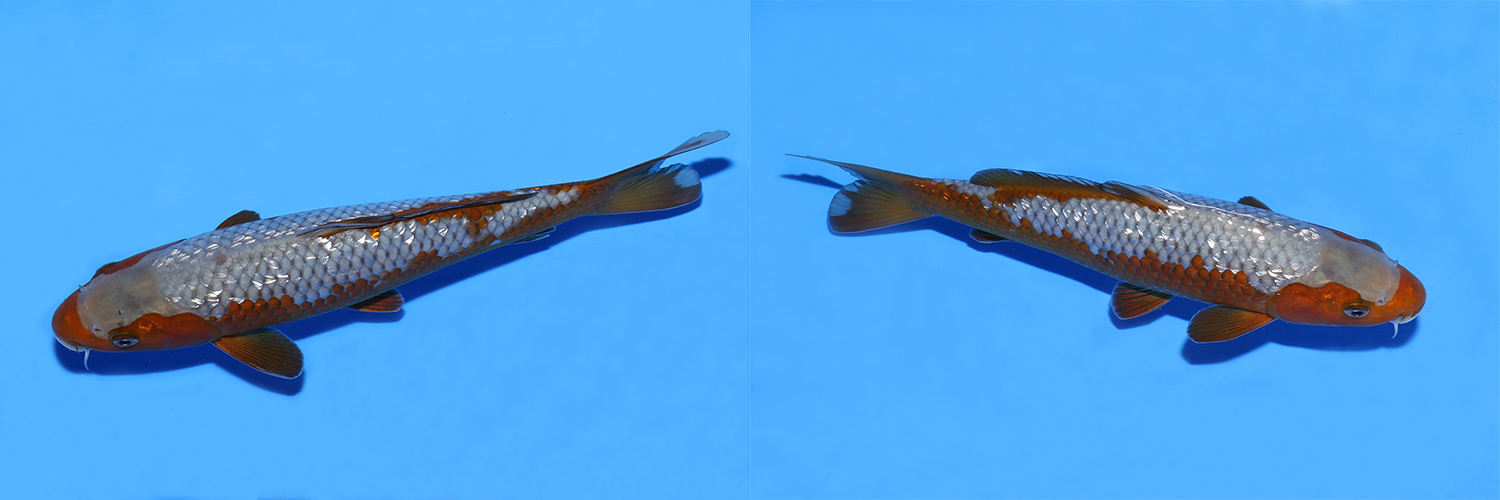Blog
Something Different from Marudo
I’m always on the lookout for something new and interesting, for me it keeps things fresh just the same as it does for the breeders producing them year in year out.
It’s becoming common place in Japan that the bigger breeders have varieties they produce as a hobby. For example, Omosako the world renowned Shiro Utsuri specialist produces Goshiki and Kujaku, Choguro who specialises in Purachina breeds Beni Kikokuryu and Goshiki to satisfy his own interests.
One breeder which ended up taking their interest to a whole new level was Marudo Koi Farm. One of the best Gosanke breeders in the world began breeding Chagoi and Karashigoi because of their interest in jumbo koi. The excellent fast growing lineage they created soon caught great traction and became a commercial side to the business. They now produce Chagoi, Ginrin Chagoi, Karashigoi and Doitsu Karashigoi for koi hobbyists all over the world.

During my last visit to the farm in June of this year I came across a pond with some very interesting Ginrin Soragoi and Ginrin Ochiba. Upon closer inspection, I noticed something very interesting with the pigmentation of the Ochiba. Not only was the colouration exceptional and unique I could see clearly that the pattern was following the same placement as the beni of Asagi. I asked Keiko san (daughter of the boss) if what I was seeing was intentional and she confirmed that it was. Hisashi Hirasawa the boss of the farm had the idea of crossing Ginrin Soragoi with Asagi and this was the second year that he has been trying to develop these unique offspring.

There was never any chance that I was leaving without them and with a good mixture of different examples in the pond it would give me chance to see how they would develop. It was also clear that the Asagi characteristics were coming through in the body shape as well with big heads, mouths and nice long bodies, something I am always keen to see in koi with great growth potential.
The pictures and videos featured in this post are currently 5 of the best examples. 3 of these clearly show the Asagi style beni pattern below the lateral line and on the face. Only time will tell exactly how they will develop but for now the unique style of the fish makes them very admirable.
-
Please login to add comment.
-
Fred Stace Posted 8 years agoA very interesting combination I'd love to see these with a few years growth.
Categories
Filter By Month
- April 2016 (2)
- October 2016 (3)
- February 2021 (5)
- September 2017 (1)
- May 2018 (1)
- November 2018 (2)
- March 2019 (2)
- June 2019 (2)
- July 2019 (3)
- October 2019 (1)
- November 2019 (1)
- January 2020 (3)
- February 2020 (2)
- March 2020 (3)
- June 2020 (1)
- July 2020 (1)
- September 2020 (1)
- October 2020 (1)
- November 2020 (1)
- December 2020 (2)
- January 2021 (5)
- March 2021 (5)
- April 2021 (2)
- November 2021 (2)
- December 2021 (1)
- January 2022 (1)
- May 2022 (1)
- August 2022 (2)
- October 2022 (1)
- November 2022 (3)
- December 2022 (2)
- March 2023 (1)
- May 2023 (1)
- July 2023 (1)
- December 2023 (1)